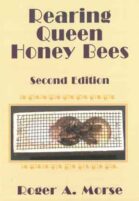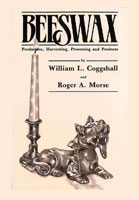This book is the second edition of a popular and practical guide for those who want to grow a few or many queens. Queen rearing has been in practice for over a century. It is an art which requires patience, skill and a steady hand. Whether you rear one, ten or a thousand queens, you must have a thorough knowledge of the life history of a queen and how she differs from a worker bee.
The queen is the most important individual in the colony. She lays eggs and produces the chemical substances which regulate social order in the hive. How well she does these things depends upon her physical condition, and this, in turn, depends upon the circumstances under which she is reared. The beekeeper who raises queens has a distinct advantage by producing better queens.
Since this book was published in 1979, many aspects of American beekeeping have changed. Two parasitic mites and the Africanized honey bees have invaded the North American continent. These invasions have increased beekeeper interest in queen rearing as a tool to help develop mite resistance and manage Africanized bees. The author is experienced with parasitic mites and Africanized bees. He has added a new chapter on rearing Africariized queens, based on his experience working with them in Brazil. The entire book has been extensively updated to meet the needs of today’s progressive beekeeper.
Roger A. Morse is professor of apiculture at the Department of Entomology at Cornell University, a position he has held since 1957. He has taught apicultural classes, conducted beekeeping research and provided extension information to beekeepers in New York State and the world. He has over fifty years of experience working with honey bees, producing honey and raising queens. An expert on queen bee biology, he is one of the most widely traveled bee researchers in the world.




